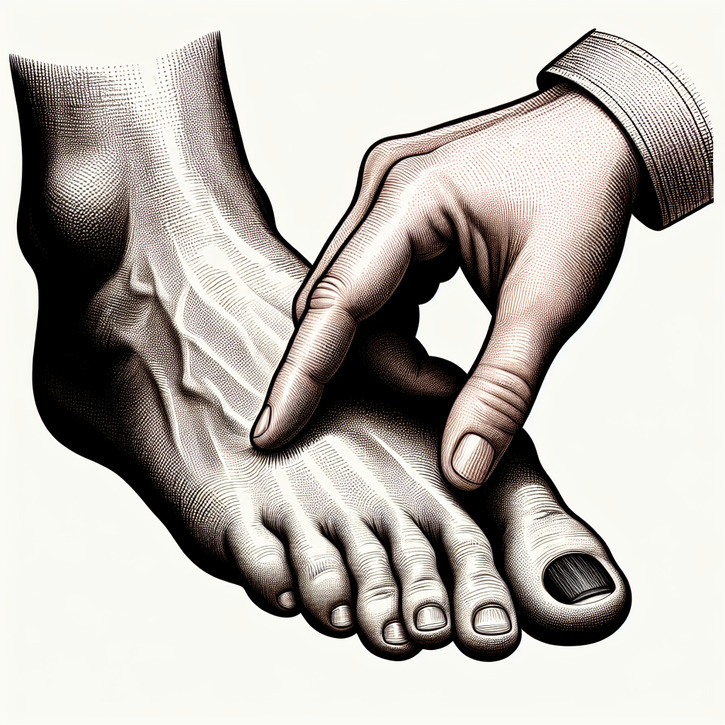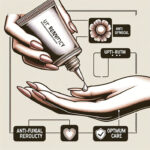Don’t Ignore a Black Toenail! When It’s Time to See a Doctor

Don’t Brush Off That Black Toenail! Here’s When to Get It Checked Out
What’s Up With a Black Toenail? The Need-to-Know Basics
So, What Exactly Is a Black Toenail?
Finding a black spot on your toenail can really throw you for a loop, and it might be more than just an aesthetic hiccup. Often, that dark patch is due to blood pooling under the nail—a condition called subungual hematoma—or it might be a sign of something deeper going on. While it can be pretty alarming at first glance, pinning down exactly what’s causing that black discoloration is key. Sometimes it’s just a result of a little injury, but other times it might hint at an infection or even a broader health issue. The first step is really just to recognize that something isn’t quite right.
Busting Myths and Clearing Up Misconceptions
There’s no shortage of misconceptions swirling around black toenails. Many people think it always comes from a traumatic injury and will just vanish on its own. But let’s face it—ignoring a black toenail might hide a more serious underlying problem waiting to escalate. It's a myth that only athletes or super active folks get them; honestly, anyone can end up with a black toenail. Rather than writing it off as a fluke, it pays to observe any changes and have a professional take a look if you’re feeling uneasy.
Why Catching It Early Really Matters
Spotting issues with a black toenail early on can be a total game-changer. Even small tweaks in nail color, texture, or even a bit of pain can be a red flag. The sooner you catch these signs and consult a healthcare provider, the better your chances are of nipping serious complications in the bud. What might seem like a minor cosmetic blip can sometimes be a window into more serious health matters. Whether it’s from a bump, a fungal problem, or something more systemic, staying ahead of the curve is your best bet for a smooth recovery.
What Can Lead to a Black Toenail?
Injuries: When a Little Trauma Goes Wrong
More often than not, a black toenail shows up after a good ol’ injury. Even something as mundane as stubbing your toe or wearing shoes that don’t fit quite right can cause bleeding under the nail, which then gives it that dark look. It’s easy to dismiss these accidents, expecting your body to sort it out on its own—but repeated trauma can pave the way for more serious issues, not just with your nail but with the surrounding skin, too. Whether you’re hitting the gym, on your feet all day at work, or just living life, it’s smart to keep an eye on your feet. A quick sting followed by a darkening nail is your body’s way of sending a little warning signal.
Fungal Infections: When Your Toenail Gets Invaded
Another culprit behind a black toenail could be a stubborn fungal infection. Fungi love to make themselves at home in warm, moist spots, which makes your feet an ideal target, especially if you tend to sweat a lot. Over time, a fungal infection can make your nail thick, brittle, and discolored—sometimes darkening right up to almost black. Early signs might just be a subtle color change or a bit of discomfort, but if left unchecked, the infection can really take hold. Keeping up with good foot hygiene is essential, particularly if you’re prone to these kinds of issues.
When a Black Toenail Hints at Bigger Health Issues
Sometimes, that mysterious black toenail might be a clue pointing to a larger health problem. For example, conditions like poorly managed diabetes or circulatory troubles can mess with your nail’s health, causing these unusual color changes. In these cases, a black toenail might signal that blood isn’t flowing as it should, or that your body is more vulnerable to infections. While these instances are less common than a simple injury or fungus, they’re definitely something to take seriously. If you’re managing a chronic illness, pay close attention to any changes in your nails and don’t hesitate to bring them up at your next doctor’s appointment.
How to Spot the Signs of a Black Toenail
Decoding the Discoloration
The most obvious clue is, well, the color. A black toenail isn’t just a cosmetic nuisance—it can be a sign that something is off. Whether the discoloration is just a spot or covers the whole nail, it can point to different issues. A totally black nail right after a bump might simply be blood under the surface, but if the dark color gradually creeps in, it could be signaling a slower-developing fungal infection or another underlying problem. Keeping a keen eye on these changes is key to catching any serious condition before it gets worse.
Texture and Thickness Tell Their Own Story
It’s not just about color—how your nail feels is important too. A black toenail might also come with changes like brittleness, uneven growth, or even separation from the nail bed. These shifts can be particularly concerning if they develop slowly over time. Cracks, ridges, and an overall irregular surface can all help your doctor figure out if an injury, infection, or something else is to blame. Watching for these subtle changes can really help in staying on top of your foot health.
The Connection Between Pain and Inflammation
We often think of a black toenail as merely a visual issue, but it can come with pain and inflammation too. You might feel a bit of pain right after the injury, but if that discomfort sticks around, it could be a sign of an infection or a problem deeper in the nail or surrounding tissues. Swelling and other signs of inflammation mean your body is putting up a fight. Don’t just shrug off persistent pain—it’s your body telling you that something needs a closer look.
Spotting When an Infection Is in the Mix
If additional symptoms like swelling, pus, or a funky odor join the party, you might be dealing with an infection. When these signs pop up, it’s a clear signal that you need to seek medical help sooner rather than later. Infections can spread quickly and turn what seems like a minor issue into a major one, so don’t hesitate to get it checked out if you notice these bad boys in action.
When Should You Have a Chat with Your Doctor?
Warning Signals You Can’t Afford to Overlook
Not every instance of a black toenail calls for an emergency room visit, but some red flags are hard to ignore. If you notice the discoloration spreading, or if it’s paired with intense pain and swelling, that could be a sign of a serious infection or deeper damage. Got underlying conditions like diabetes? Don’t wait around; what seems like a simple nail issue might be something more. It’s better to have a professional take a look and determine if further tests or treatment are needed.
The Risks of Waiting It Out
Putting off a doctor’s visit for a black toenail might seem harmless, especially if everything appears minor. But trust me—ignoring it can lead to complications that snowball over time. Once an infection sets in or the nail damage worsens, treatment can become much more complicated and drawn out. Conditions like fungal infections or poor circulation can really take a turn for the worse with delay. In a nutshell, early medical advice is usually less stressful, less costly, and can help you sidestep bigger health issues down the line.
How Doctors Figure Out What’s Going On
A Look and a Chat: Physical Exam and Medical History
When you eventually sit down with your healthcare provider, the first step is usually a thorough physical exam. Your doctor will take a good look at your black toenail—checking the color, texture, and thickness—while also asking about your overall medical history. Ever had a similar injury or recurring infections? All that detail helps pin down whether your nail issue is just a one-off incident or part of a larger condition. This holistic approach is really crucial for getting the right diagnosis.
Using Tests and Imaging to Get the Full Picture
If things seem a bit complicated, your doctor might order some tests or imaging studies. X-rays can uncover hidden fractures or bone issues related to the trauma, while lab tests might check for fungal infections or other pathogens. In rare cases, if there’s any suspicion of something more serious, a biopsy could be on the cards. These diagnostic tools are incredibly helpful for figuring out whether you’re dealing with a minor hiccup or something that needs more intensive treatment.
Bringing in the Specialists
Sometimes, the situation might be beyond what your general practitioner can handle, and that’s when you might get referred to a specialist. Podiatrists, dermatologists, or even infectious disease experts can step in with their detailed knowledge and experience. This way, you get a comprehensive evaluation and a treatment plan that’s tailored just for you. When symptoms are persistent or the cause isn’t clear, getting expert advice can make all the difference.
Treatment Options: What’s on the Table?
Non-Surgical Options: Keeping It Simple
For many people, a black toenail can be managed without any invasive procedures. If the issue is just a minor injury or an early-detected fungal infection, treatment might involve keeping the area clean, using antifungal creams, and maybe even some specialized bandaging to protect the nail while it heals. Keeping the nail trimmed and avoiding further trauma are simple yet effective moves. Over-the-counter pain relievers can also help ease any discomfort. With these non-surgical treatments, you’re essentially making sure that the nail gets the best chance to recover naturally.
Surgical Steps: When It’s Time for a Hands-On Approach
Sometimes, though, the situation might call for a bit more intervention. If the nail is really separated from the nail bed or if there’s a large subungual hematoma messing with blood flow, a minor surgical procedure might be needed. This could involve draining the built-up blood or even removing part of the nail so your doctor can take a closer look and let the area heal correctly. Even though the word “surgery” can sound a tad intimidating, these procedures are usually quick, done under local anesthesia, and designed to get your nail back in tip-top shape with minimal fuss.
Relieving Pain and Speeding Up Recovery
Managing discomfort is a big part of dealing with a black toenail, especially in the early stages when pain and swelling might be more pronounced. Along with any prescribed pain medications, your doctor might suggest home remedies—like soaking your foot in warm water with a touch of antiseptic—to ease inflammation. Alternating with cooling packs and keeping your foot elevated when you can also goes a long way. Following your doctor’s aftercare instructions to a T will help you recover faster and minimize the chance of the problem popping up again.
Preventing Problems and Caring for Your Toenail After Treatment
Good Nail and Foot Hygiene: Your First Line of Defense
When it comes to keeping your nails healthy, prevention really is the best strategy. A solid routine—daily washing, drying your feet thoroughly, and trimming your nails carefully—can help cut down on the risk of fungal infections and other nail issues. By keeping your nails clean and well-cared-for, you’re not only warding off infections but also setting yourself up to notice any early signs of trouble. Whether you’re a weekend warrior or just living an everyday active life, a little extra attention to your feet can go a long way.
Choosing Shoes That Play Nice With Your Feet
Your footwear can either help protect your nails or be the source of recurring problems. Shoes that don’t fit right or cut off circulation can lead to constant minor traumas, which over time, might contribute to a black toenail. It pays to invest in shoes that offer a comfortable fit, good ventilation, and proper support. After all, the right pair of shoes can help prevent micro-injuries and ensure that your feet get the care they deserve.
Follow-Up Care: Keeping an Eye on Things
Once you start treating a black toenail, staying in touch with your healthcare provider is crucial. Regular check-ups give your doctor a chance to monitor your progress, tweak treatment if needed, and quickly catch any potential complications before they escalate. Even if your nail starts to look better, any small changes or recurring issues should be addressed promptly. Keeping that line of communication open not only helps manage the current condition but also serves as a proactive step towards long-term foot health.
To sum it all up, a black toenail is more than just a cosmetic quirk—it could be your body’s way of waving a red flag about your foot health. Don’t ignore it; take action, stay informed, and consult your doctor to keep your foot happy and healthy.





